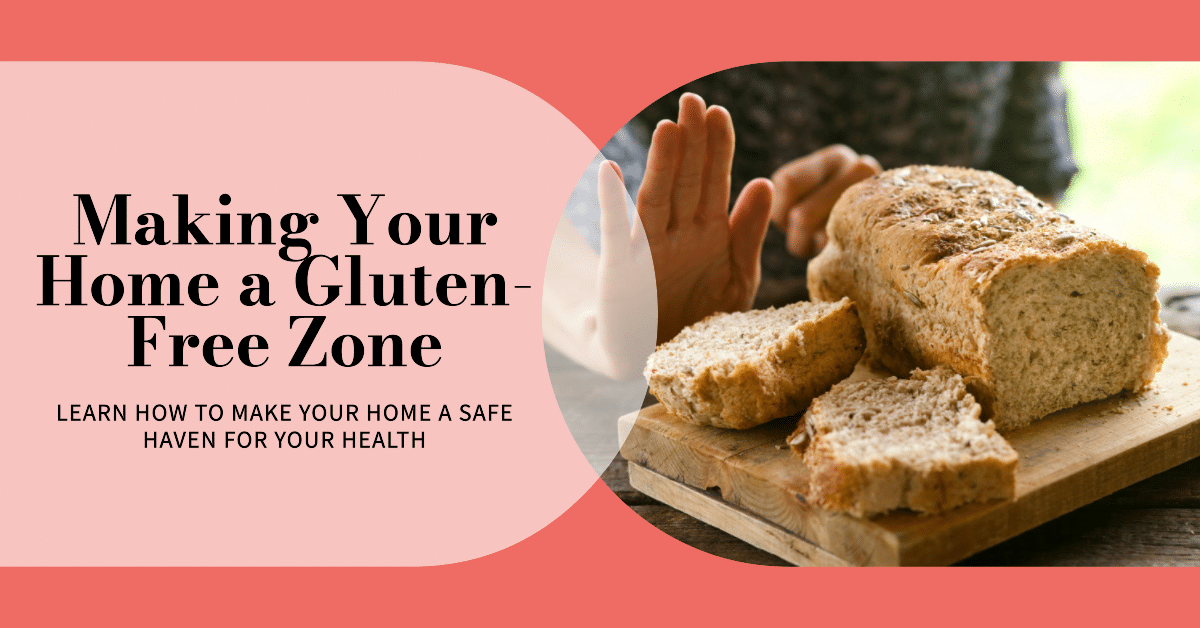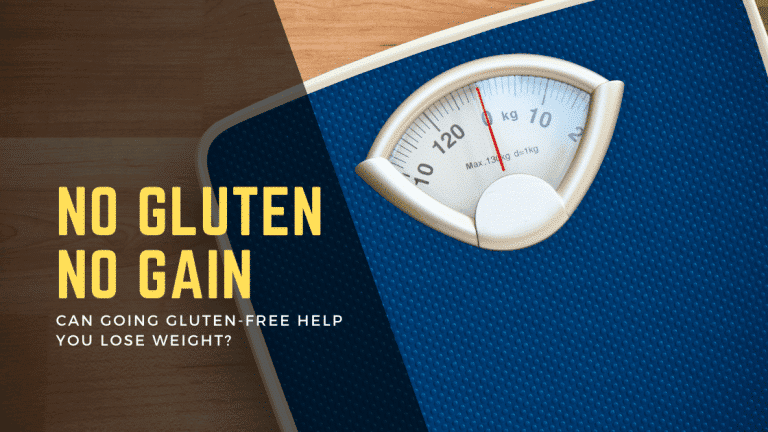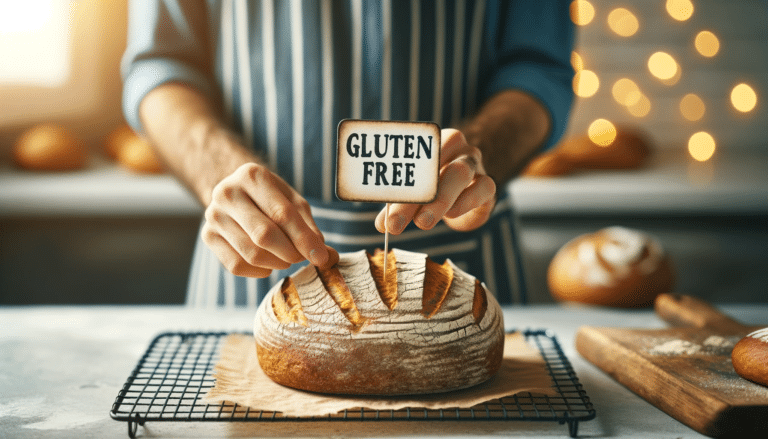How to Make Your Home a Gluten-Free Zone: Top Hacks Revealed

Ready to kick gluten out of your home and make it a truly gluten-free zone?
Spoiler: it’s more than swapping out flour and chucking the Cheerios. Scrub down those cupboards and get savvy with labels.
Gluten sneaks in everywhere—so let’s show it the door.
Stick around if you want the whole lowdown.
Key Takeaways
- A deep-clean in your kitchen is non-negotiable.
- Hidden gluten isn’t just in food—think toiletries.
- Labels are secret maps to a gluten-free lifestyle.
- It’s a family affair: everyone’s got to get on board.
- Creative gluten-free cooking keeps taste buds happy.
Why Is It Necessary to Make Your Home Gluten-Free?
Hey, no judgment if you’re just gluten-curious, but there are legit medical reasons for wanting a gluten-free zone.
Celiac disease, a severe form of gluten intolerance, wreaks havoc on your gut.
Then there’s Irritable Bowel Syndrome (IBS), another troublemaker that often doesn’t play well with gluten.
Trust me, making your home gluten-free can be a game-changer for your digestive health.
But don’t just hop on the bandwagon without knowing the ropes. Missteps can cause more harm than good, like those related to dangers of a gluten-free diet if not celiac.
Deep Cleaning Your Kitchen
Empty and Wipe Down All Cabinets
You read it right—empty out every last corner of those kitchen cabinets. Because gluten is a sticky bugger.
Tiny particles cling to shelves, handles, even that jar of mysterious seasoning you forgot you had.
A simple wipe-down with an all-purpose cleaner should do the trick.
The keyword here is ‘thorough.’ A half-hearted clean won’t cut it.
Tackling Hidden Gluten in Appliances
Ah, appliances—the overlooked culprits. Your toaster? A gluten trap. Your blender? You better believe that thing’s had its share of gluten-filled smoothies.
Consider dedicating appliances for gluten-free foods only. And when in doubt, clean it out. Yes, that means you might need a separate toaster.
Sound excessive? Check out my guide to how much gluten can a celiac tolerate, and you’ll soon discover it’s not much at all!
Navigating the Gluten-Free Aisle
Smart Grocery Shopping 101
Believe me, folks, grocery shopping is where your gluten-free mission either sails smoothly or crashes and burns. You’ll need to cozy up to reading food labels.
The law mandates mentioning gluten-containing ingredients in the UK, but always double-check for that handy ‘gluten-free’ stamp as rules differ from country to country.
A brief pause to read the fine print saves you hours of stomach cramps later.
The Truth about ‘May Contain’ Labels
Here’s the skinny on ‘may contain’ labels. They’re your yellow traffic light—proceed with caution. This usually means the product is processed in a facility that also handles gluten-filled foods.
It’s not a deal-breaker, but if you’re hypersensitive or managing celiac disease, maybe swerve past these options.
You might be surprised by how a “gluten-free” label can still lead to celiac cross-contamination.
Swapping Your Staples for Gluten-Free Alternatives
Got Bread? Get Gluten-Free Bread!
Who doesn’t love a good sandwich or toast in the morning? If you think going gluten-free means bidding adieu to bread, you’re in for a pleasant surprise.
Many brands offer gluten-free bread that tastes just as good—if not better—than your regular loaf.
And don’t even get me started on the creative recipes you can whip up with gluten-free flours. They’re your new BFFs in the kitchen.
The Dairy Dilemma
Milk and gluten? They’re not exactly partners in crime, but you’d be surprised where gluten can lurk.
Many flavored yogurts and processed cheeses have gluten additives. If you’re a dairy lover, opt for plain yogurts and natural cheeses.
Keep in mind that butter is usually gluten-free, but it’s always a good idea to double-check. Hey, even something as simple as butter raises questions like – is butter gluten-free?
Becoming a Gluten Detective
Know Your Gluten Guises
Gluten is a master of disguise. It loves to sneak into things you’d least expect. I’m talking about sauces, dressings, and even your cherished candy stash.
Words like ‘malt flavoring’ and ‘modified food starch’ can signal hidden gluten.
By knowing these code names, you become your very own gluten detective. So the next time you’re eyeing that bottled salad dressing, scan the ingredients like Sherlock with a magnifying glass.
Beware the Beverage Section
You’re thinking, “It’s liquid. How can gluten be in liquids?” Oh, you’d be amazed. Beer is the usual suspect, but even some ciders can contain gluten.
It’s not about being paranoid, it’s about being informed. Just a little pro-tip: Even in beverages, gluten can wreak havoc on your gut, causing issues like sinus congestion.
Kitchen Practices: Your Safe Haven or Danger Zone?
Prep Surfaces: The Invisible Enemy
Counter surfaces are your invisible battlefield. Whether you’re kneading dough or chopping veggies, the surface can be a sneaky carrier of gluten from past meals.
Consider having separate cutting boards and utensils exclusively for gluten-free cooking. Silicone mats designated solely for gluten-free foods are also a godsend.
The Dish Sponge: A Trojan Horse
It seems harmless. It’s just sitting there, waiting to clean. But your dish sponge can be a Trojan Horse for gluten.
Yup, it can trap gluten particles and spread them to your ‘safe’ pots and pans.
My advice? Keep two separate sponges—one exclusively for gluten-free dishware. Trust me, your tummy will thank you later.
The Social Side of a Gluten-Free Zone
Your Inner Circle Needs to Be in the Loop
Being gluten-free isn’t a solo quest; it’s a group mission. Everyone in your household needs to be clued in.
Because no matter how cautious you are, if Aunt Sally is toasting her wheat bread and leaving crumbs everywhere, your effort goes down the drain.
Hold a family meeting, explain the stakes, and put a game plan together. You’re a team, after all.
When Guests Enter Your Territory
Having guests? While it’s awkward to quiz them about their dietary choices, it’s vital if you’re maintaining a gluten-free zone.
Share your reasons; trust me, they’ll get it. If you’re worried about seeming over-the-top, slip them some mouth-watering gluten-free treats and they’ll be converts in no time.
Making Your Home A Gluten-Free Zone – Final Thoughts
We’ve navigated the wild terrains of gluten-free living, from decoding labels to scrutinizing kitchen habits. It’s about more than just swapping bread brands; it’s about making conscious choices every day.
A gluten-free home is attainable, and it starts with you. With the right knowledge and tools, your home can be transformed into a sanctuary, a true gluten-free zone.
So start small, aim big, and let the transformation begin. Cheers to your health and a gluten-free future!
Disclaimer: This content is based on my personal experience as an individual diagnosed with celiac disease and IBS (Irritable Bowel Syndrome) who follows a strict gluten-free diet. This does not constitute medical advice. Please consult a medical professional, nutritionist, or qualified dietitian for personalized, professional advice.






